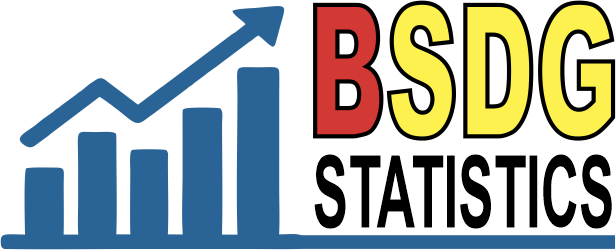KARAKTERISTIK ZONASI BATUAN RESERVOAR BERDASARKAN PETROGRAFI, SERBUK BOR, UJI TEKANAN DAN TEMPERATUR DI LAPANGAN PANAS BUMI SOKORIA, KABUPATEN ENDE, PROVINSI NUSA TENGGARA TIMUR
RESERVOIR CHARACTERISTICS BASED ON PETROGRAPHY, CUTTING, PRESSURE AND TEMPERATURE TEST IN SOKORIA GEOTHERMAL FIELD, ENDE REGENCY, NUSA TENGGARA TIMUR PROVINCE
Abstract
Sokoria Geothermal Field is located at Sokoria Village, Ende Regency, Nusa Tenggara Timur Province. Petrographic analysis and Methylene Blue test (MeB) were carried out to estimate the illite-smectite ratio and occurence of other alteration minerals as indicator for cap rock, transition and reservoir zones. Pressure and temperature test (P&T test) was also performed to determine those zonation. The result concludes the geothermal caprock zone is distributed from the surface to the dept of 700 mVD (meter vertical depth), indicated by medium to high MeB index (20 – 80%), as smectite characteristic temperature up to 100°C. The transition zone is located from the depth of 700 mVD to 1100 mVD, with low MeB index (6 – 20%), as illite and illite–smectite characteristic and well temperature up to 200°C. Reservoir zone is located at 1100 mVD, indicated by very low MeB index (<10%),as characteristic of illite, with first appearance of epidote in well W-1 at 1119 mMD (meter measured depth) and well W–2 at 1338 mMD. P&T test shows reservoir temperature reached 250°C.
Downloads
References
Corbett, G.J., and Leach, T.M., 1998. Southwest Pacific gold-copper systems: Structure, alteration and mineralization. Soc. Econ. Geol. Special Publication 6, 238p.
Harvey C, Anderson, E., Johnstone, R., Christyono, 2000. Coexisting Volcanism and Hydrothermal Activity at Kelimutu, Flores Island, Eastern Indonesia, Proceeding of World Geothermal Congress, Kyushu-Tohoku, Japan.
Harvey C, Anderson, E., Johnstone, R., Christyono, 1998. Sokoria, East Indonesia: A Classic Volcano Hosted Hydrothermal System, Proceeding of 20th NZ Geothermal Workshop.
Hochstein, M.P., Simanjuntak, J., Sudarman, S., 2010. Geothermal Prospects of the Eastern Banda Arc Islands (Indonesia). Proc WGC.
Giggenbach, W., 1991. Chemical techniques in geothermal exploration. Appl. Geochem. Geotherm. Reserv. Dev. 119–144.
Grim, R.E., 1953. Clay Mineralogy, International series in the earth sciences. McGraw-Hill.
Nicholson, K., 2012. Geothermal fluids: chemistry and exploration techniques. Springer Science & Business Media.
Reyes, A.G., 2000. Petrology and mineral alteration in hydrothermal systems: From diagenesis to volcanic catastrophes. United Nations University, Geothermal Training Programme.
Reyes, A.G., 1990. Petrology of Philippine geothermal systems and the application of alteration mineralogy to their assessment. J. Volcanol. Geotherm. Res. 43, 279–309. https://doi.org/10.1016/0377-0273(90)90057-M
Sarmiento, Z.F., Sagala, B., Siagian, H., 2019. The Sokoria Geothermal System, Flores Island, Indonesia. Geothermics 82, 282–295.
Suparman, S., 2009. Sumur Injeksi Mt-6 Di Lapangan Panas Bumi Mataloko, Kabupaten Ngada–Nusa Tenggara Timur. Bul. Sumber Daya Geol. 4, 58–67.
van Bemmelen, R.W., 1949. The Geology of Indonesia: General Geology of Indonesia and Adjacent Archipelagoes, the East Indies, Inclusive of the British Part of Borneo, the Malay Peninsula, the Philippine Islands, Eastern New Guinea, Christmas Island, and the Andaman and Nicobar Islands. Martinus Nijnhoff, the Netherlands.
Copyright (c) 2020 Buletin Sumber Daya Geologi

This work is licensed under a Creative Commons Attribution-NonCommercial-ShareAlike 4.0 International License.
Authors whose manuscripts are published agree to the following terms:
The publication rights of all journal manuscript materials published on the Buletin Sumber Daya Geologi website are held by the editorial board with the knowledge of the author (moral rights remain with the manuscript’s author).
The formal legal provisions for access to digital articles in this electronic journal are subject to the terms of the Creative Commons Attribution-ShareAlike (CC BY-SA) license. This means that Buletin Sumber Daya Geologi has the right to store, convert media/formats, manage in the form of a database, maintain, and publish the article without requesting permission from the author, as long as the author’s name is cited as the copyright holder.
Manuscripts published in both print and electronic formats are open access for educational, research, investigative, and library purposes. Beyond these purposes, the editorial board is not responsible for any violations of copyright law.















